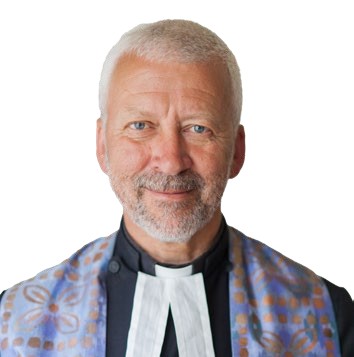Sauntering the earth
The Rev Richard Frazer explains why nature reminds us of the glory of God.

The Rev Dr Richard Frazer
NATURE speaks to us!
That great son of Dunbar, John Muir, moved to the United States as a youth and quickly became enchanted by the grandeur of the High Sierra. He founded the Sierra Club in 1892, a pioneering movement for environmental conservation. His strict Presbyterian background evolved as he began to feel that nature was his Bible as much as the pages of scripture he had learned by rote growing up. We have no other tools than our senses to encounter the Divine, and, the Universe, in all its infinite and awesome grandeur, is the expression of God’s handiwork.
Places and encounters often have a resonance, a mystical quality as though God is speaking to us through nature. On the Hill of Transfiguration, three disciples saw Jesus for who he really was perhaps more clearly than they had before wandering through the villages of the Galilee with him.
Not long ago, my wife and I were sitting together on the beach near home. I was about to lead a couple of pilgrimages that would take me away for nearly three weeks. I said I was finding periods of separation more and more difficult. She reminded me of the writing of the Lebanese poet, Khalil Gibran who had suggested that separateness in togetherness was a good thing. The cedar and the oak tree beautify their landscape growing tall side by side, but they will not flourish if they overshadow each other.
Just as she shared these thoughts, two dolphins swam past, less than 50 metres out to sea. They were side-byside, swimming and dipping underwater in perfect symmetry, in spite of their separateness. It felt immensely reassuring, a sign that all would be well. As a friend once said to me: ‘There are no such things as coincidences, only convergences’.
People often speak of the island of Iona as a ‘thin’ place, where heaven comes close and there is a profound tradition within our faith of the idea of the numinous. Places and moments that speak to us at a very deep level.
Throughout my life, I have walked the hills of Scotland and found myself lost in reverence for the manifestation of Divine beauty we find there. I used to call it hiking, but I have abandoned that word thanks to John Muir. He did not like the word.
To him, hiking spoke of dominance, aggression, even. He preferred to use the word, ‘saunter’. In the middle ages, villagers in France would see people passing through and ask, “Where are you heading?” “A la Sainte Terre”, would come the reply, “To the Holy Land”. They were pilgrims on their way to Jerusalem, “sauntering”.
Muir believed that the whole earth was holy ground, so we should not hike through it but saunter, touching the earth with gentle reverence. For weeks at a time, Muir would head off alone through the largely unspoilt wilderness of the American west. He wrote that “Going out was really a going in”. His faith deepened as he sauntered.
“Places and encounters often have a resonance, a mystical quality as though God is speaking to us through nature.
There are two versions of the human relationship to the creation related in the book of Genesis. Humans invited to ‘have dominion’ or summoned to ‘tend and serve’. In many respects, the human story is that of dominion, the creation merely a quarry for human exploitation. Giving less priority to the latter has led to the environmental degradation that threatens our entire wellbeing.
Creation is the manifestation of God’s handiwork, no one has seen God, but we see his works. Nature nods to us, nudges us and reminds us of the glory of God. That is reassuring when our reliance on words, creeds and statements does not seem sufficient.